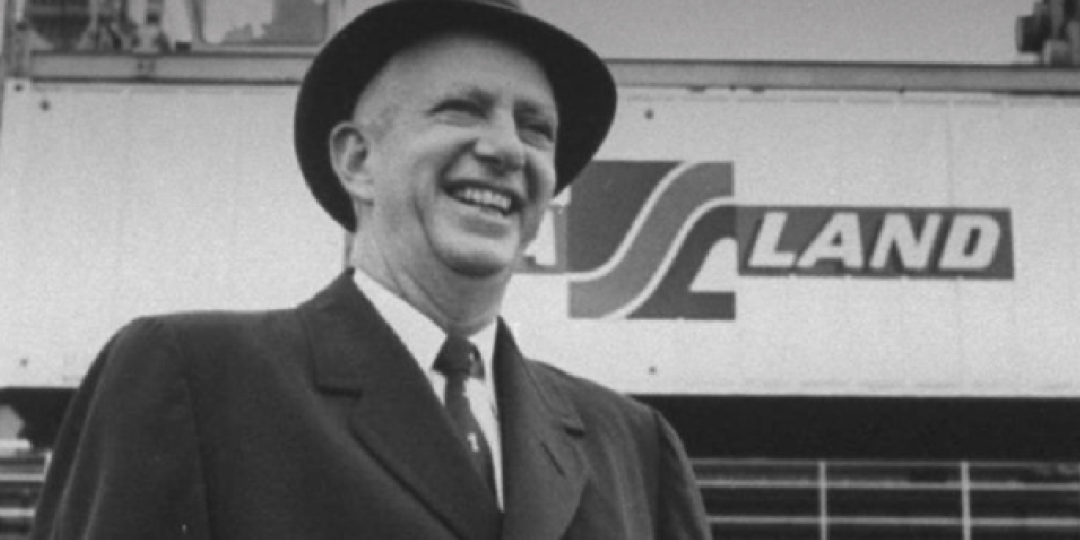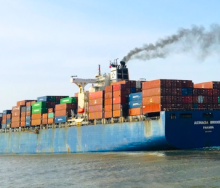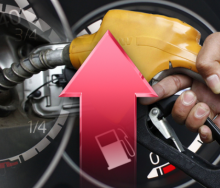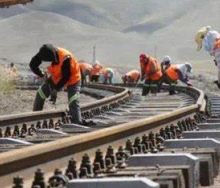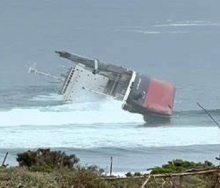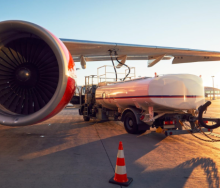Container shipping moves 95% of all manufactured goods around the world.
In 2017, more than four trillion dollars of products were sent over the oceans.
It’s an industry that underpins the global economy, but it wasn’t always as big or as efficient as it is today.
The idea of shipping started in the third century BCE, when merchants realised that sending products overseas was cheaper and faster than by land.
Early on, goods were loaded onto ships in sacks, barrels and wooden crates, with scores of dockworkers squeezing them on decks or in tight spaces below.
Ships often spent more time at ports than sailing, and not much changed until 1956. That is when American truck driver Malcolm McLean stacked 58 metal boxes on a ship going from New Jersey to Houston.
This idea completely revolutionised the industry. The containers not only protected the products, but when the ships docked at ports, truck beds and freight trains could take them away without repackaging.
A flurry of innovation followed, and container sizes were standardised. In 1966 Moore-McCormack Lines started the first transatlantic container service. And then in 1968 one of the first modern container ships hit the water.
The Japanese Hoki Maru carried 752 20-foot containers, using a standard still used today.
Cargo can now be moved from purpose-built vessels to rail and road in massive volumes, cutting transport costs by at least 75%.
This led to the emergence of global shipping behemoths like Denmark’s Maersk Line, France’s CMA CGM, and China’s Cosco.
By the 1980s, around 90% of manufactured goods were containerised. From designer dresses and food to home goods, electronics and heavy machinery. Globalisation exploded as ships moved Asian goods to the West, and vice versa, stopping at dozens of ports along the way.
Much later in the 21st century, the Panama and Suez canals were expanded, allowing for bigger ships to cross in greater numbers - but it’s not all been smooth sailing.
The industry has been plagued by too many ships in the water, sparking a series of price wars that have plunged many operators deep into the red and completely sunk others.
This caused a wave of consolidation, seeing the top 20 ocean carriers shrink to 11, a number that is expected to get even smaller.
Shipping has also seen criticism from governments and environmentalists, who say it’s responsible for around a quarter of the world’s nitrogen-oxide pollution. In response, operators are adopting cleaner fuels, like natural gas.
Today the industry continues to boom. Some container ships are as high as the Empire State Building if turned upright, and can move more than 20 000 boxes each.
A single container can hold 10 000 iPads, at a cost of $0.05 each from Shanghai to Hamburg. The average TV coming to the US from China costs less than $2 to ship.
The most recent growth has been in refrigerated shipping. Fresh produce, food and flowers that once only moved by plane are now shipped on satellite-tracked reefer boxes that keep them fresh. Bananas can last in these for up to 50 days.
So what does the future hold? Likely, crewless behemoths running on batteries that can move 50 000 containers. Global cargo distributed through blockchain technology will eliminate paperwork and further cut costs. SOURCE: WSJ via Global Training Center.
